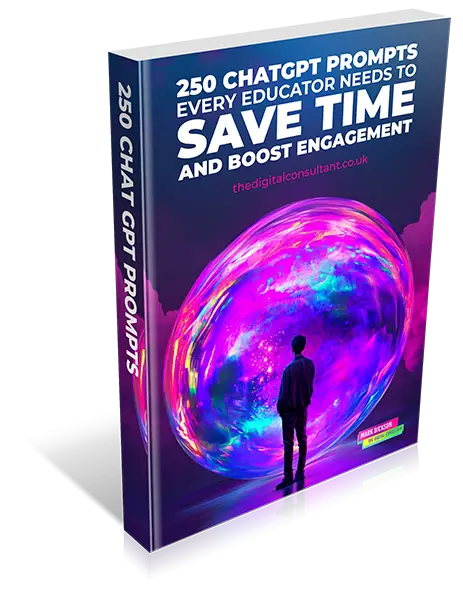I’m going to be totally honest with you, for years I thought writing student group profiles was just another tick box admin exercise set by the Quality Team as evidence of planning for individualised learning, and not really of any use for me or my students. But the longer I’ve taught, the more I’ve become a group profile convert (maybe even an evangelist!). A proper student group profile has become one of the most useful tools I’ve used to think about, discuss, and plan to support and challenge my students and collaborate with my colleagues.
The Truth About Group Profiles: Why Most Teachers Get Them Wrong
Like most things we’re asked to do, it’s all about how we approach the task and find the meaning in it. If it doesn’t help me be a more effective teacher, doesn’t make my teaching easier, and doesn’t help my students, I just won’t engage properly. I’ll do just enough to tick the box. That’s a slippery slope to cynicism and disillusionment. Group profiles shouldn’t be a tick box exercise.
Why Writing Student Group Profiles Can Be One of Your Best Teaching Tools
If you’ve ever felt that group profiles are just an admin job, it’s time to change how you see them. A good group profile isn’t just a document, it’s a planning tool that helps you shape lessons, support students, and make sure no one slips through the net.
Group profiles give you a proper picture of your students, showing strengths, challenges, and learning behaviours based on observations, assessments, and feedback. When used properly, they help teachers adapt lessons, keep consistency across teaching teams, and improve student progress.
How to Write Student Group Profiles That Actually Help Your Teaching
A group profile should be a shared, working document, using the combined knowledge of the teaching team. It doesn’t need to be perfect, but it should be a clear plan for how you’re going to support each student in the group.
Many teachers focus only on students who struggle or cause disruption, with others described as “quiet and studious – no issues.” But every student should make good progress. Your group profile should show how you’re helping each student move forward. Ask yourself, “What am I doing about that?”
Got a student who’s smashing every assignment but hates speaking in front of others? What are you doing about that? Could you build up their confidence by asking them easier questions first? Pair them up for presentations? Use voice-over slides to help them talk through their work? Behaviour → Strategy.
Make Group Profiles a Living Document, Not a One-Off Task
Group profiles should be reviewed and updated. When a student’s behaviour or grades change, you should be asking, “What am I doing about that?” A good habit is updating the group profile at least once a term.
If someone joins your teaching team, they can pick up the group profile and instantly understand the group and what’s already in place.
The Simple Formula for How to Write Student Group Profiles That Work
Every effective group profile should include:
- Key student information like strengths, barriers, and learning behaviours
- Common themes across the group like low engagement, confidence issues, or high ability
- Targeted teaching strategies that give clear, actionable steps
- Progress tracking so you can see if your strategies are working
Stop Listing Observations, Start Writing Actionable Strategies
Too many group profiles stop at the problem and forget the solution. You need both. Here’s a quick fix.
Weak Example:
John is a quiet student.
Stronger Example:
Use targeted questions to build John’s confidence in discussions. Start with easier factual questions, build up to more complex ones, with a goal of John answering higher-level questions by Term 2.
This mindset shift is at the heart of how to write student group profiles that are actually useful for you and your students.
Four Common Mistakes That Ruin Group Profiles (And How You Can Avoid Them)
- Copying and pasting profiles: Don’t copy the same comments. Yes, you can use themes, but every student deserves personal feedback.
- Letting it gather dust: Group profiles should change as students progress.
- Listing problems with no strategy: Every issue should have a solution.
- Not sharing with your team: Group profiles work best when everyone uses them and discusses them.
Let Your Group Profile Shape Smarter Lesson Planning

A well-written group profile can make your planning easier. If several students struggle with focus, build in short, structured tasks and clear transitions. Plan stretch and challenge activities for all students and give everyone a chance to tackle more advanced work. You can build in scaffolded independence, problem-solving, or real-world examples.
How to Write Student Group Profiles That Support Better Behaviour Management
Group profiles also help with behaviour. If you know students struggle with transitions, you can plan in things like countdown timers to keep things calm and smooth. You’re not reacting in the moment, you’re preventing issues before they happen.
Group Profiles Help You Plan for Progress, Not Labels
The best teachers don’t label students, they plan for progress. Group profiles let you look beyond the label and use strategies to help every student move forward.
Final Thoughts on How to Write Student Group Profiles That Actually Work for You
Group profiles aren’t just paperwork. They can save you time, help you plan smarter, and make sure every student is seen and supported.
Focus on strategies you can act on, review and update your profiles regularly, and share them with your teaching team. That’s how to write student group profiles that actually make your teaching life easier and your students’ progress stronger.
Want the Research? Start With These Evidence-Based Resources
Hattie, J. (2012). Visible Learning for Teachers: Maximizing Impact on Learning. Routledge.
Highlights the importance of teachers knowing their impact, with “teacher clarity” and “knowing your students” ranking highly in effect sizes.
https://amzn.to/3IQwSu3
Coe, R., Aloisi, C., Higgins, S., & Major, L. E. (2014). What Makes Great Teaching? Sutton Trust.
Explains that effective teaching is underpinned by strong subject knowledge and using assessment to identify student needs and adapt teaching.
https://www.suttontrust.com/our-research/great-teaching/
EEF (2021). Teacher Feedback to Improve Pupil Learning. Education Endowment Foundation.
Highlights the importance of using assessment and feedback to identify gaps and adjust teaching, making group profiles a useful everyday tool.
https://educationendowmentfoundation.org.uk/education-evidence/guidance-reports/feedback





